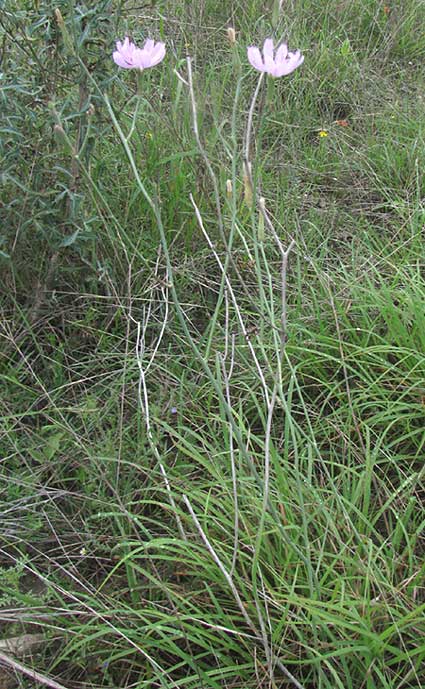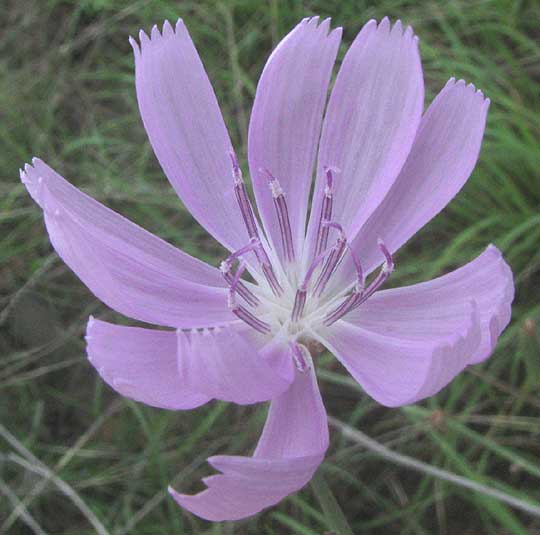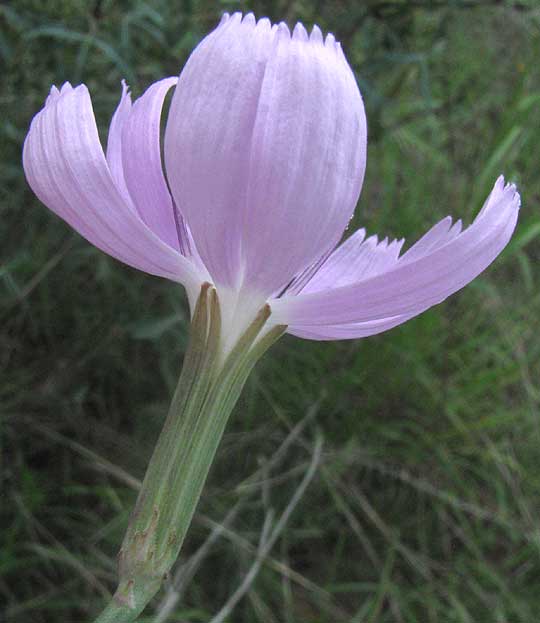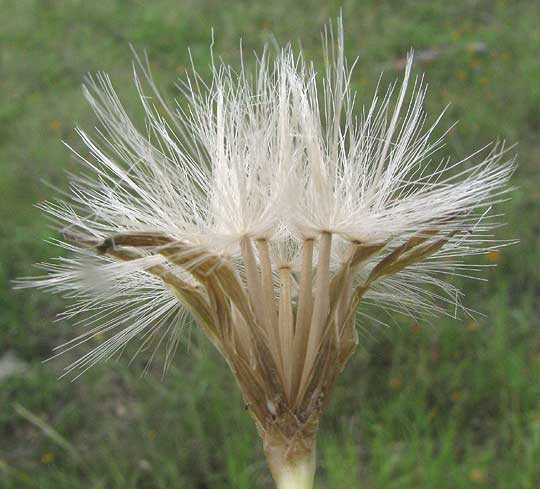Excerpts from Jim Conrad's
Naturalist Newsletter
from the June 23, 2013 Newsletter issued from the Frio Canyon Nature Education Center in the valley of the Dry Frio River in northern Uvalde County, southwestern Texas, on the southern border of the Edwards Plateau; elevation ~1750m (~5750 ft); N29.62°, W99.86°; USA
SKELETONPLANT
Early on a somber, overcast morning when fields and prairie patches were vast stretches of moist, dark greenness, a certain wildflower produced pale blue orbs that swayed and bobbed on light breezes, and possessed that magical quality of catching light in such a way that they seemed to produce that light from within. As the Bobwhites and Lark Sparrows called, it was a pretty thing to see... that dark green lushness with its waltzing orbs.
Up close you could see that the flower-head orbs topped stiff, branching, slender and few-leafed stems emerging above the grass, and that this year's green stems stood beside bleached skeletons of stems of previous years, exactly as you can see below:

A beautiful picture of a flowering head is shown below:

A shot of the flower head from below showing long, slender bracts, or phyllaries, growing side by side in a single series (not overlapping as in most heads) appears below:

These plants have been flowering for a few weeks, so some heads already produce cypsela-type fruits topped with white-haired "parachutes," as shown below:

The flower head, composed of only ray flowers and thus lacking the usual "eye" of disk flowers, is structured like a Dandelion flower head, and the parachuted fruits also are Dandelion-like, so we know that this is a member of the Dandelion's enormous Composite or Daisy Family.
Here we have LYGODESMIA TEXANA, in English usually called the Texas Skeletonplant. Remembering how this years' shoots rise among last year's weathered-white stems, the "skeletonplant" part of the name makes sense. Also, the plant occurs mostly in Texas, extending only a little into the neighboring Mexican state of Coahuila, and a bit of New Mexico and southwestern Oklahoma, so even the Texas part of the name makes sense.
The Flora of North America describes the habitat of Texas Skeletonplant as "Rocky, calcareous, alkaline soils in oak-juniper woodlands, mesquite brushlands, open grasslands, red sandy soils, roadsides," which is exactly where it's found here.
Like the related Dandelion, Texas Skeletonplant's herbage exudes a white, milky latex when broken, and normally such milk-producing plants are used medicinally by one culture or another. The CRC Ethnobotany Desk Reference accessible by Google Books reports that the Hopi and Navaho people used Texas Skeletonplant for skin and women's ailments.